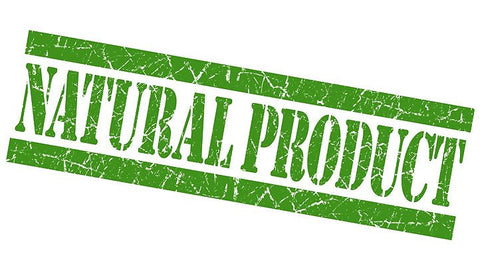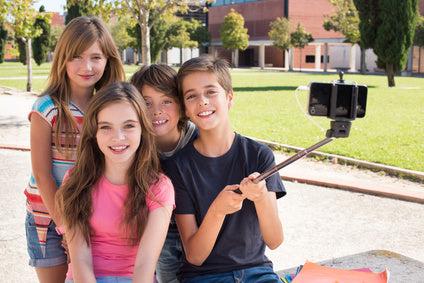LiceGuard News
Effectiveness of "Natural" Lice Products 0
Beware of the classic "all-natural" tagline when deciding which lice product to buy for your children!
Not only do most of the natural products on the market lack clinical proof of efficacy, they can also be dangerous. For instance:
- The neurotoxin Pyrethrin is actually derived from chrysanthemum flowers;
- Tea tree oil is toxic if ingested;
- Recent University of Maryland Medical Center research warms against pregnant women and small children being exposed to Eucalyptus oil; and
- Lavender oil can have serious side effects and can spur adverse reactions.
In order to avoid any sort of harm, try LiceGuard's RobiComb! It uses electronic pulses to zap lice on contact, removing the need for any potential toxic ingredients. AND there are clinical studies proving its efficacy at removing lice and eggs!

- LiceGuard Webmaster
- Tags: eliminate lice lice treatment LiceGuard non-toxic robicomb treatment
Beware of Toxic OTC and Prescription Lice Treatments! 0
75% of the lice product market is dominated by "big brand" lice treatment shampoos and ointments that contain Permethrin or Pyrethroids, which are not only pesticides, but also neurotoxins.
The Environmental Protection Agency (EPA) in a 2009 memorandum classificed Permethrin as "likely carcinogenic to humans."
The National Pediculosis Association (NPA), a non-profit group that advocates on head lice issues, has collected over 1,000 reports linking the use of pesticide shampoos to seizures, behavioral problems and leukemia.
What should you do instead to keep your children safe? Use LiceGuard's suite of lice treatment products! They are non-toxic and pesticide free!

- LiceGuard Webmaster
- Tags: eliminate lice lice treatment LiceGuard non-toxic treatment
Don't let lice haunt your house after Halloween fun! 0

Of all the frightening creepy crawlies around at Halloween, there is one you definitely can and should protect your children (and yourself!) from – HEAD LICE! While the new strain of SUPER LICE is SUPER SCARY there are easy things you can do to avoid being infested by these ghastly ghouls.
Here are a few expert tips for avoiding lice this time of year:
- If possible, put all new or borrowed costume items in a sealed plastic bag for 48 hours before wearing them. Without a host to feed on, any head lice will die within 24-48 hours.
- If time is short, place costume items in a dryer on high heat for 45 minutes before wearing them. Check labels first and be sure to avoid drying any items that might be damaged by the heat.
- When borrowing wigs, masks, or hats, use a swimming cap to cover your child’s own hair. This creates a physical barrier that will be tough for lice to cross.
- Encourage your child not to share personal items such as head bands, hats, masks, wigs, etc. This includes trying on costumes that have been previously opened in stores.
- Examine your child’s head when he/she returns from parties or sleepovers for at least 7 days after a possible exposure to head lice. The RobiCombis a great tool for conducting a quick and easy check - simply comb it through your child's hair and listen for any indications of lice as the comb zaps them on contact.
- Last but not least, use a lice repellent spray to ward off any hopeful crawlers. Just a few squirts of LiceGuard's Lice Repellent Spray will help protect your child from head lice for 24 hours. Check out your local Walgreen's store for great deals on our repellent spray.
HAVE A SPOOKTACULAR HALLOWEEN!
- LiceGuard Webmaster
Top Tips to Prevent Lice this Fall! 0
LiceGuard's Repellent Spray is non-toxic, recommended and safe for daily use! And did we mention that it smells great?! Click Here for our special at Walgreens!
1. Say no to group selfies!!! There is a rise in the number of older children getting lice and it's been traced back to taking group selfie photos! Boys and girls are getting nice and close for that perfect photo opportunity and lice are loving the chance to find a fresh head of hair!

2. Encourage kids with long hair to try some cool, new tied-back styles! The internet is abound with tutorial videos on sock buns, fun braids and slick-backed ponytails - all of which make if hard for lice to crawl into hair!
3. Don't share scarves and hats! With winter approaching, hats and scarves are set to escape their bins! While it may seem like common sense not to share hats, scarves can be just as complicit when it comes to spreading lice. Remind kids that lice like the warm areas behind the ears and at the nape of the neck - exactly where their scarves rest!
4. Sleepover party?! Not to put a damper on a sleepover party, but they can also be a party for lice! When the children come home from sleepovers, be sure to check their heads. If parents want to be EXTRA diligent, they can put pillows, sleeping bags and stuffed animals in the dryer on high heat for 30 minutes to kill any stray bugs that may have tried to hitch a ride to a new home!

5. Halt the helmet sharing!! Kids should be wearing helmets for many activities, such as riding bikes and playing sports, but they need to be taught to hold off on sharing in these cases! If helmets have to be shared, the best bet is to spray them regularly with a lice repellent spray to prevent lice from camping out and infecting the next child that puts it on!
6. Don't forget Halloween is right around the corner! A frightful festival of ghouls, goblins and potentially LICE!!! We can't keep away the things that go bump in the night, but we can help prevent lice! Don't let kids share wigs, masks or hats unless they are sealed in a plastic bag for 48 hours!

- LiceGuard Webmaster
A Super Lice strain has emerged which are resistant to common lice treatments (shampoos). LiceGuard’s RobiComb kills Super Lice on contact. 1
NBC news reports on Super Lice outbreak:
A Super Lice strain has emerged which are resistant to common lice treatments (shampoos). LiceGuard’s RobiComb kills Super Lice on contact.
Very few products on the market can successfully claim both safety and efficacy like the RobiComb.
LiceGuard® No Nit Kit that is non-toxic and pesticide free. The kit contains a shampoo, magnifying glass, and micro-tine comb. Lice eggs are covered in a sticky substance which binds them to human hair follicles. LiceGuard’s shampoo loosens that grip and allows lice and eggs to be picked out of the hair easily and effectively.
LiceGuard® Lice Repellent is one of the few non-toxic repellents on the market. It utilizes a proprietary repelling ingredient developed over a decade ago, tested extensively, and protected under trade secret. With a few squirts, it prevents lice with 24 hour protection.
Lice resistance is creating a vicious cycle: frustrated parents overusing pesticide-based treatments that don’t work – resulting in dangerous levels of toxicity in children.
-
12 deaths relating to prescription-based pesticides Lindane and Malthion.
-
6 deaths (including 2 suicides) relating to OTC pesticide Permethrin.
-
Other reports described conditions such as shortness of breath, hallucinations, and nausea.
RobiComb doctor recommended in the Journal of American Academy of Dermatology
“As a dermatologist, I have not been particularly impressed with the efficacy of available chemical pediculicides in the treatment of head lice. I chanced upon what has now become my treatment of choice for head lice, the LiceGuard® RobiComb. This non-chemical therapeutic modality is not only painless and odorless, but also has been efficacious each of the six times I have used it. Furthermore, therapeutic resistance does not seem to be a consideration because the mechanism of action is fundamentally electrocution.” Kenneth S. Resnik, MD
- Rob Irving
- Tags: lice robicomb Super Lice



